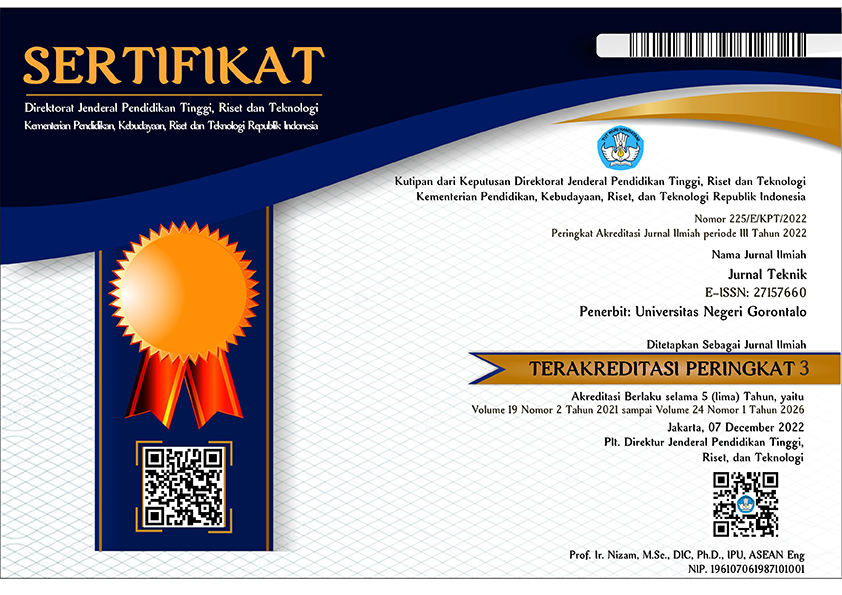Analisis Sentimen pada Aplikasi Translate Google Menggunakan Metode SVM (Studi Kasus: Komentar Pada Playstore)
Abstract
This research aims to analyze reviews in understanding the opinions and emotions expressed by users regarding the Google Translate application on the Google Play Store using sentiment analysis. By using the Support Vector Machine (SVM) method in sentiment analysis of the Google Translate application, to get a better understanding of how users respond to the application. This can help developers improve the application experience, responding better to user needs and preferences. This user review analysis uses the SVM method. The measuring tool in this research uses, firstly, the Indonesian Lexicon as a tool to obtain positive and negative results, secondly, term frequency–inverse document frequency (tf-idf) as a support for the results of the evaluation. Google Translate app has a dataset of 1000 user reviews collected from Google play store. The results of analysis using Support Vector Machine produced 95% accuracy, with "no" as the result of the most positive and negative reviews out of 1580 reviews.
Downloads
References
Alam, A. (2020). Google Translate Sebagai Alternatif Media Penerjemahan Teks Bahasa Asing Ke Dalam Bahasa Indonesia. Instruksional, 1(2), 159. https://doi.org/10.24853/instruksional.1.2.159-163
Aung, K. Z., & Myo, N. N. (2017). Sentiment analysis of students’ comment using lexicon based approach. Proceedings - 16th IEEE/ACIS International Conference on Computer and Information Science, ICIS 2017, 149–154. https://doi.org/10.1109/ICIS.2017.7959985
Daeng, I. T. M., Mewengkang, N. ., & Kalesaran, E. R. (2017). Jurnal Kemudahan Smartphone. Acta Diurna, 6(1), 1–15.
Darwis, D., Pratiwi, E. S., & Pasaribu, A. F. O. (2020). Penerapan Algoritma Svm Untuk Analisis Sentimen Pada Data Twitter Komisi Pemberantasan Korupsi Republik Indonesia. Edutic - Scientific Journal of Informatics Education, 7(1), 1–11. https://doi.org/10.21107/edutic.v7i1.8779
Fikri, M., & Sarno, R. (2019). A comparative study of sentiment analysis using SVM and Senti Word Net. Indonesian Journal of Electrical Engineering and Computer Science, 13(3), 902–909. https://doi.org/10.11591/ijeecs.v13.i3.pp902-909
Gelar Guntara, R. (2023). Pemanfaatan Google Colab Untuk Aplikasi Pendeteksian Masker Wajah Menggunakan Algoritma Deep Learning YOLOv7. Jurnal Teknologi Dan Sistem Informasi Bisnis, 5(1), 55–60. https://doi.org/10.47233/jteksis.v5i1.750
Gifari, O. I., Adha, M., Freddy, F., & Durrand, F. F. S. (2022). Analisis Sentimen Review Film Menggunakan TF-IDF dan Support Vector Machine. Journal of Information Technology, 2(1), 36–40. https://doi.org/10.46229/jifotech.v2i1.330
Hermawan, A., Jowensen, I., Junaedi, J., & Edy. (2023). Implementasi Text-Mining untuk Analisis Sentimen pada Twitter dengan Algoritma Support Vector Machine. JST (Jurnal Sains Dan Teknologi), 12(1), 129–137. https://doi.org/10.23887/jstundiksha.v12i1.52358
Mustakim, H., & Priyanta, S. (2022). Aspect-Based Sentiment Analysis of KAI Access Reviews Using NBC and SVM. IJCCS (Indonesian Journal of Computing and Cybernetics Systems), 16(2), 113. https://doi.org/10.22146/ijccs.68903
Najiyah, I., & Hariyanti, I. (2021). Sentimen Analisis Covid-19 Dengan Metode Probabilistic Neural Network Dan Tf-Idf. Jurnal Responsif : Riset Sains Dan Informatika, 3(1), 100–111. https://doi.org/10.51977/jti.v3i1.488
Praghakusma, A. Z., & Charibaldi, N. (2021). Komparasi Fungsi Kernel Metode Support Vector Machine untuk Analisis Sentimen Instagram dan Twitter (Studi Kasus : Komisi Pemberantasan Korupsi). JSTIE (Jurnal Sarjana Teknik Informatika) (E-Journal), 9(2), 88. https://doi.org/10.12928/jstie.v9i2.20181
Purbaya, M. E., Rakhmadani, D. P., Maliana Puspa Arum, & Luthfi Zian Nasifah. (2023). Implementation of n-gram Methodology to Analyze Sentiment Reviews for Indonesian Chips Purchases in Shopee E-Marketplace. Jurnal RESTI (Rekayasa Sistem Dan Teknologi Informasi), 7(3), 609–617. https://doi.org/10.29207/resti.v7i3.4726
Ruslim, K. I., Adikara, P. P., & Indriati. (2019). Analisis Sentimen Pada Ulasan Aplikasi Mobile Banking Menggunakan Metode Support Vector Machine dan Lexicon Based Features. Jurnal Pengembangan Teknologi Informasi Dan Ilmu Komputer, 3(7), 6694–6702.
Sari, H., Ginting, G. L., & Zebua, T. (2021). Penerapan Algoritma Text Mining dan TF-IDF Untuk Pengelompokan Topik Skripsi Pada Aplikasi Repository STMIK Budi Darma. Terapan Informatika Nusantara, 2(7), 414–432.
Sodik, F., & Kharisudin, I. (2021). Analisis Sentimen dengan SVM , NAIVE BAYES dan KNN untuk Studi Tanggapan Masyarakat Indonesia Terhadap Pandemi Covid-19 pada Media Sosial Twitter. Prisma, 4, 628–634.
Syakur, A. (2021). Implementasi Metode Lexicon Base Untuk Analisis Sentimen Kebijakan Pemerintah Dalam Pencegahan Penyebaran Virus Corona Covid-19 Pada Twitter. Jurnal Ilmiah Informatika Komputer, 26(3), 247–260. https://doi.org/10.35760/ik.2021.v26i3.4720
Wulandari, D. A., Rohmat Saedudin, R., & Andreswari, R. (2021). Analisis Sentimen Media Sosial Twitter Terhadap Reaksi Masyarakat Pada Ruu Cipta Kerja Menggunakan Metode Klasifikasi Algoritma Naive Bayes. E-Proceeding of Engineering, 8(5), 9007–9016.
Copyright (c) 2023 Sri Ayu Ashari, Wahyu Ade Saputra Bayu, Esta Larosa, Bait Syaiful Rijal (Author)

This work is licensed under a Creative Commons Attribution-ShareAlike 4.0 International License.













